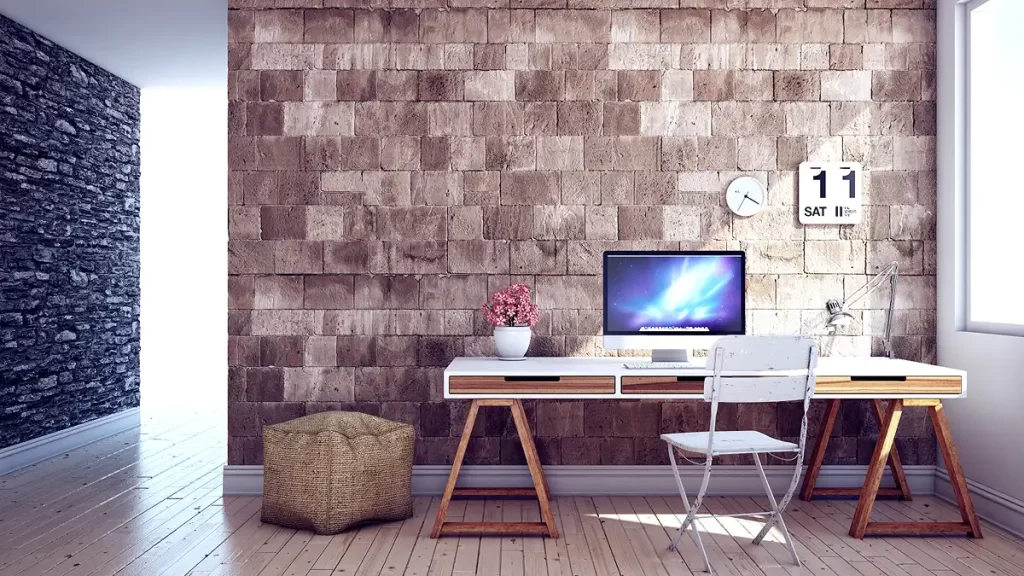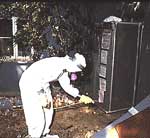Expert advice on how to reduce exposure to toxins in your house, including lead, asbestos, radon and other harmful indoor air pollutants.
Did you know that the air inside your house is probably more polluted than the air outside? Though we think of our houses as places of safety and refuge, they may be falling short of this expectation.
Gasses, chemicals, and toxins given off by building materials, cleaning products, molds, and other pollutants may put our health in jeopardy or at best make our homes less comfortable. Some of the primary offenders include asbestos, lead, radon, airborne dust and chemicals, and water pollutants.
Ironically, with today’s high-tech windows, weather-stripping, insulation, and other energy savers, our houses don‘t “breathe” as well as do older, drafty homes. As a result, a residual buildup of indoor air pollutants can occur.
Ventilation can solve many air-pollution issues, but it’s tricky to ventilate rooms without wasting energy. Heat-recovery ventilators can ventilate a house without wasting energy, but they work only in certain situations and are an expensive solution if the problems are minor.
Radon
Radon is a dangerous radioactive gas that, if allowed to build up in your home, could pose serious health risks to you and your family. According to the Environmental Protection Agency, radon is responsible for over 20,000 deaths each year and accounts for 15 percent of lung cancer cases. Radon is found naturally in most soil and water as the element uranium decays, and when we inhale it, the radioactive particles become lead inside our lungs, causing them to release radiation into the tissues.
Radon levels are higher in certain areas of the country than others (log on to EPA Zone Map to find your area’s concentration), but no matter where you live, having your home tested is a worthwhile health precaution. In addition, radon is becoming an increasingly important issue for home buyers, so having your home tested before you put it on the market can save you the heartbreak of a missed sale because you were waiting for the radon test results.
Radon is found naturally in the environment in concentrations of .4 picocuries (a unit of radiation) per liter. This low level is difficult to achieve within a home, so you should aim for levels of less than 4 picocuries per liter, which is the concentration the EPA considers safe. Radon can enter the home through various gaps and openings around your house, such as drains, sump pumps, crawlspaces, utilities access panels, and cracks in basement walls and floors.
Long-term and short-term tests are available, and both are simple to use. Try the short-term test first to determine if there is an immediate problem, and then use a long-term test to get a more accurate idea of radon levels in your home over an extended period. The EPA recommends testing every two years or after any large renovation.
Both tests usually consist of a small container of charcoal that’s left out to collect radon present in your home. These kits are readily available at most hardware stores and are inexpensive; the cost to analyze the sample from a recommended lab is also modest. Follow the directions that come with the test, and pay attention to where the container should to be located, usually on a lower floor where it won’t be disturbed or affected by humidity. The test should be left out two or three days with doors and windows kept closed, and no appliances that bring outdoor air into your home, such as a whole-house fan, should be run during that time.
Long-term tests work much the same way, only they collect radon over a three-month to one-year period and give a much more accurate picture of your home’s radon levels, since weather and other conditions can cause an increase or decrease in radon levels at different times.
If your home has high levels of radon, you have several options for safely removing it from air and/or water. Soil suction draws radon gas in through pipes underneath a basement or crawlspace and expels it out of the house. Energy recovery ventilators constantly replace indoor air with outdoor air.
If radon is in your water, aerators and filters can help remove it; you can place these on your faucets, but it’s much better if they’re installed where water comes into your home. You can request information from your water company if you use city water, or if you use well water, you can purchase a test kit for it.
According to the EPA, installing systems to reduce radon levels can range from $800 to $2,500, depending on the mitigation method and the home’s construction. If you’re building a new home, it’s much cheaper to test the land for radon and then install radon reduction equipment as you build rather than adding it after the fact.
For more information, call the National Radon Hotline at (800) SOS-RADON.
Asbestos
Asbestos fibers, when airborne, can be a serious health risk.
Although building materials containing asbestos were phased out in 1986, many homes built before that date have heating ductwork, pipe wraps, artificial fireplace logs, siding, resilient flooring, and sprayed acoustical ceiling materials that include asbestos. In many cases, asbestos can be left alone or covered over if the material isn’t flaking or crumbling, but some types—notably ductwork—should be removed because air blowing through ducts can loosen and carry the fibers throughout the house.
For more about asbestos, see Asbestos Testing & Removal.
Air Pollutants
Of course, there are many other types of airborne pollutants, from cigarette smoke to pet dander to molds. To deal with these, you can get either a whole-house or room-size air cleaner. See Air Cleaners Buying Guide.
Carbon monoxide is a dangerous type of air pollution that can occur in a home that has improper venting of combustion appliances such as fireplaces, furnaces, and water heaters. For more about carbon monoxide, please see Buying Carbon Monoxide Detectors.
Lead
Lead poisoning is a serious hazard for everyone; children and pregnant women are especially vulnerable to its effects. Though lead was outlawed as an ingredient in paint in 1978, lead is found in older paint, plumbing, and the solder used to join pipes.
Before sanding, scraping, or stripping old paint, test it for lead. (You can buy a simple test kit at home improvement centers.) For more information about dealing with lead, contact the National Lead Information Center at (800) 424-5323.
Lead and other pollutants can be removed from water by using appropriate water treatment devices. As with air cleaners, several different types are made; the right one to choose will depend on what you want to remove from the water.
Lead, a naturally occurring metal found in the earth’s crust, is toxic to humans. Until 1978, it was freely used in homes as a component of some paint, faucets, solder, pipe and pipe fittings, and roof flashing. Houses built before 1960 are very likely to contain materials with lead. Homes built between 1960 and 1978 may or may not contain lead paint or plumbing. Homes built after 1978 should not contain lead materials unless dated products were used in the construction.
Lead is a hazard when ingested or inhaled. Drinking water that has traveled through lead in pipes, breathing dust from sanding lead-based paint—these poison the body. Even though the amounts taken in may be minute, this toxin builds up over time, causing serious neurological conditions.
Children younger than six years old are particularly vulnerable (this is why the hazards of toys containing lead paint make the headlines). If you have young children, it’s wise to test for lead in your home. If you have concerns about lead in your plumbing, test your drinking water. Lead paint is a hazard when it is exposed as the surface coat, if it is deteriorating, or if you sand or scrape it when remodeling.
If you think that your house may contain dangerous concentrations of lead, you have a few options. You can start by conducting a preliminary test yourself. Manual testing kits are available online or at hardware stores or home improvement centers. Though these test kits are inexpensive and easy to use, hiring a professional lead abatement contractor or risk assessor is the only way to definitively quantify the risk.
Most professional lead inspectors tender one of two separate services—inspections and risk assessments—although some may be licensed to perform both. Usually, paint inspections will inform you as to the content of lead in your home’s interior or exterior paint. But these tests usually don’t enlighten you as to the hazards or potential risks involved with the results. This is what a risk assessment is intended to do.
Risk assessors will alert you to any significant sources of lead exposure, such as peeling paint or excessive levels of lead in dust, and will provide you options for tackling the problem. Either of these examinations typically costs around $300 depending on the extent of the work, your location, and the service provider.
But before you hire someone to inspect your home for lead, you should determine what their credentials are. Many states—but not all—have established certification programs that endorse individuals to assess lead-related hazards in residential homes. If your state does not have such a program, check with the county and city in which you live to find out if they offer a similar one.
Find a Pre-Screened Local Toxic Materials & Lead Testing Pro








 Don Vandervort writes or edits every article at HomeTips. Don has:
Don Vandervort writes or edits every article at HomeTips. Don has:




